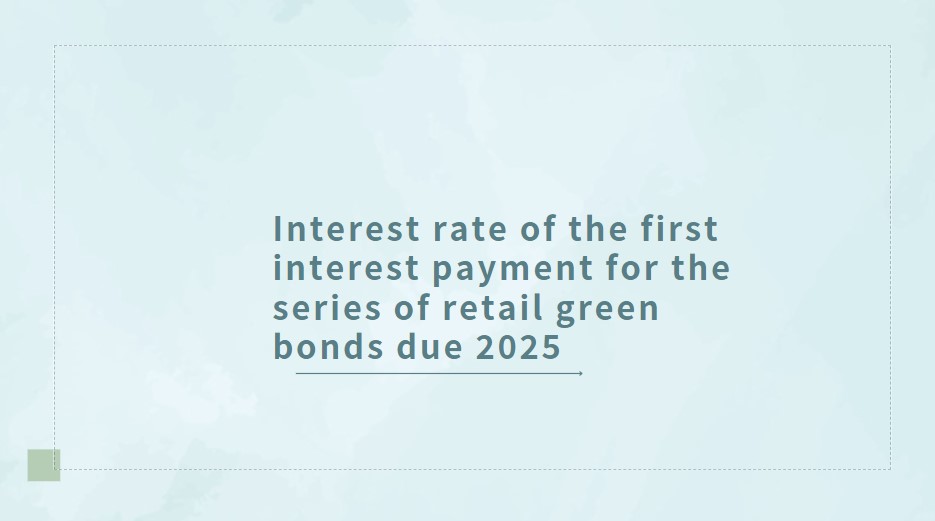Changing role of Chinese government bonds
This is mainly due to short-term arbitrage factors such as the interest rate differences between China and the United States brought by repeated US Federal Reserve interest rate hikes, inverted yields between the two countries and the renminbi's depreciation against the US dollar.
At the same time, the proportion of Chinese government bonds in overseas institutions' portfolios has increased by nearly 6 percentage points so far this year, showing the rising importance of higher exposure to Chinese government bonds for overseas institutions.
In other words, overseas institutions have attached greater importance to maintaining RMB liquidity in terms of their asset management practices. In this sense, Chinese government bonds play an important role in stabilizing China's financial asset market.
The report to the 20th National Congress of the Communist Party of China pointed out that internationalization of the RMB should be advanced in an orderly manner. Assets considered safe in a global perspective are thus crucial to support the orderly internationalization of the RMB. Chinese government bonds have become basic financial products for promoting high-level opening-up.
The Fed has raised interest rates six times since March, four of which were significant hikes as high as 75 basis points. Its current policy interest rate is between 3.75 percent and 4 percent. But China's policy interest rate is set at 3.65 percent, thus creating an inverted interest rate difference between China and the US.
Since early August, the 10-year Chinese government bond market yield and the US treasury bond yield have been showing an inversion. The inverted difference has been widening, resulting in normal outflow from the Chinese bond market.
According to China Central Depository & Clearing Co Ltd, overseas institutions held 3.147 trillion yuan ($439 billion) in interbank bonds at the end of September. That number contracted by 558.5 billion yuan from the data by the end of January, which was 3.705 trillion yuan.
Despite the decline in value, Chinese government bonds have helped stabilize the capital market if the structure of bonds held by overseas institutions is taken into account.
Overseas institutions mainly hold Chinese government bonds and policy bank bonds. For the first nine months of this year, these two categories of bonds accounted for 97.27 percent of the total amount of bonds held by overseas institutions in China's interbank bond market on average. Specifically, the monthly ratio had risen from 96.95 percent in January to 97.63 percent in September.
Policy bank bonds accounted for 24.87 percent of the bond portfolio in September, down 4.81 percentage points from the number in late 2021.
The US Fed started to raise interest rates in March, and the yields of two-year and one-year government bonds between China and the US began to invert in April. The inversion gradually expanded as the US sped up its monetary tightening.
As of Nov 3, the inverted difference in two-year and one-year government bond yields between China and the US had reached 262 basis points and 303 basis points, respectively. The difference in 10-year government bond yields between China and the US has been inverted since the beginning of August, with the inversion reaching 146 basis points by Nov 3.
As of Nov 4, the US dollar index had risen by 15.44 percent this year. The RMB had therefore depreciated by 12.78 percent against the greenback. Against the backdrop of inverted interest rates between China and the US, and RMB depreciation, overseas institutions still held about 2.29 trillion yuan of Chinese government bonds at the end of September. Although this number is down 9.1 percent from this year's peak of 2.52 trillion yuan reached in late January, the contraction is relatively smaller as overseas institutions' holdings of Chinese corporate bonds were slashed by 54.5 percent from that at the beginning of this year to 3.795 billion yuan.
This shows that Chinese government bonds have become an important category in the bond portfolio of overseas institutions. They are also the most stable product held by overseas institutions in the Chinese bond market.
Chinese government bonds also assume the function of financing apart from the purpose of investment. However, their financing function has not been brought into full play for overseas institutions. According to CCDC, overseas institutions' spot bond trading took up 3.24 percent of the settlement amount in terms of overseas institutions' interbank bond transactions during the first nine months. Pledged repurchases accounted for 0.19 percent of all settlements over the same period and outright repurchases took up 0.68 percent.
Settlement for pledged repurchases and outright repurchases are quite small given the fact that overseas institutions held about 4 percent of China's interbank bonds. But overseas institutions' spot bond trading volume is relatively close to the proportion of bonds they hold, indicating that overseas institutions mainly hold Chinese government bonds for investment purposes.
We can draw two conclusions from the above facts. First, overseas institutions have not aggressively reduced holdings of Chinese bonds at a time when short-term interest rates are inverted and the RMB is weaker vis-a-vis the US dollar. It reflects that the positive market outlook for China's economic growth in the mid to long run has offset short-term unfavorable factors. Second, overseas institutions' increasing exposure to Chinese government bonds over the past few months indicates that RMB liquidity has been more valued by overseas asset management firms. This has demonstrated Chinese government bonds' importance in stabilizing China's financial market.
The writer is a research fellow of the National Academy of Development and Strategy at the Renmin University of China, and vice-president of the School of Economics at the Renmin University of China. The author contributed this article to think tank China Macroeconomy Forum.























































First, please LoginComment After ~